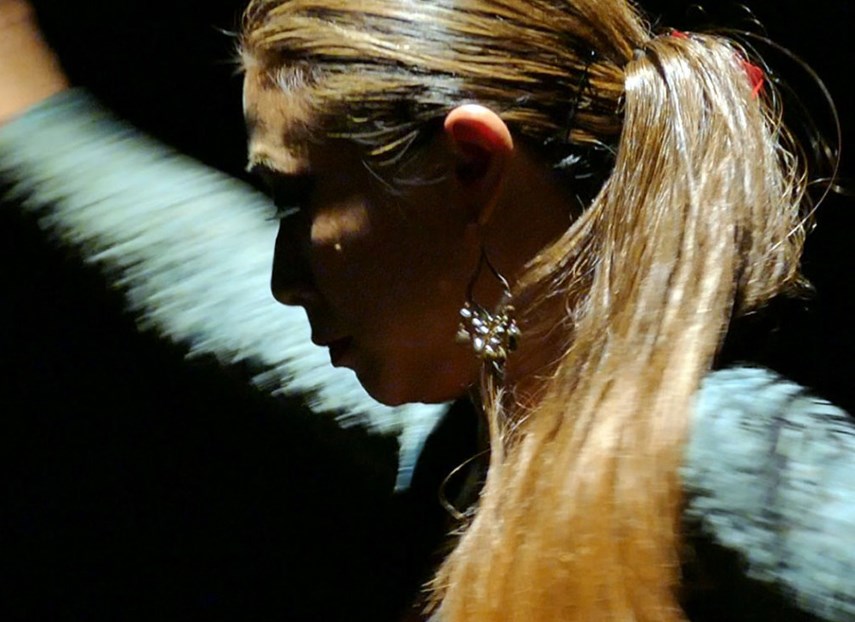28th annual Vancouver International Flamenco Festival, Sept. 21-29. Various locations. For complete schedule visit vancouverflamencofestival.org.
It’s taken weeks of early-morning practices for Kasandra Lea to perfect her newest flamenco dances – pieces she says are just as unique as the North Shore’s multicultural residents.
“In Vancouver, we have a cultural amalgamation… We’ve all come together from different places,” says Lea, referring to her fiery dance, Tangarrojira, a Cuban compilation that involves tangos, a garrotin, a guajira and a rumba. “This dance is a cultural fusion. It’s really fun for us Canadians to watch.”
Lea’s passion for flamenco is itself a blending of cultures.
“Take the fans I use in the dance. We don’t really know where fans originate from – the ones I’m using are Chinese silk fans,” says Lea, who goes by the stage name Kasandra “La China,” a nod to her Chinese-Canadian heritage.
While studying violin at the elite level, Lea was drawn to flamenco, which began with the Roma people who immigrated by caravan to southern Spain from India.
“The Roma people – the gypsies – ended up in the south of Spain and were oppressed and persecuted by the Spanish. Flamenco is an art against this oppression,” says Lea from her home in Edgemont Village. “It’s proud, spicy, a bit angry – with a lot of courage. It shows strong emotions.
“Flamenco originated over 200 years ago and is combined with Spanish culture, but there is a big difference between Spanish dance and flamenco.”
Lea will be performing three pieces with her group, the Kasandra Flamenco Ensemble, at the Vancouver International Flamenco Festival, which takes place from Sept. 21 to 29 at several venues in Vancouver. The festival celebrates flamenco’s diverse roots in Sephardic, Persian, Indian and Gypsy cultures.
The Kasandra Flamenco Ensemble’s first piece, Seguiriyas, is a traditional dance that takes the audience from the “passionately dark to the delightfully cheeky.”
“It’s one of the most deep, profound songs in the flamenco art form,” says Lea. “Solo Flamenco presents flamenco in its purest form – the cuadro (a group that includes a dancer, guitarist, singer and percussionist).”
Like her second dance, Tangarrojira, the third piece, Passages and Rhythm – a combination of flamenco and contemporary dance – brings cultural diversity to the forefront. It’s a humorous duet with Alvin Tolentino from Co. Erasga, a Filipino-Canadian contemporary dancer.
The Kasandra Flamenco Ensemble will be performing on Sept. 26 at 8 p.m. at the Annex, adjacent the Orpheum Theatre downtown.
“The three pieces are very different, so it will be great for people to be able to compare the styles,” says Lea, who trained in Spain and, closer to home, has appeared with the Vancouver Symphony Orchestra and the Vancouver International Dance Festival.
The 28th annual festival also includes the Canadian debut of Spain’s Sara Calero Company in Petisa Loca (Crazy Girl) – a group at the forefront of the renewal of both Spanish and Flamenco dance – at the Vancouver Playhouse on Sept. 22. The piece shares the diaries of Spanish women who were forced to emigrate with thousands of others from Europe to the United States in the mid-20th century.
Canadian artists in the festival include La Azulita Flamenco Ensemble from Nova Scotia, Monique Salez & The Dream Cab from Victoria, and Vancouver’s Flamenco Rosario’s premiere of Dialogue Extended, a collaboration with groups from Spain and Mexico.
“I want to think that Flamenco Rosario continues to be relevant because of its ability to embrace change and challenges, and in that way our work connects with audiences,” says artistic director and founder of the festival Rosario Ancer, who says he is interested in the growth and evolution of flamenco, rather than simply reiterating its past. “It is a privilege to share my love for flamenco and the honour of further introducing so many newcomers to the world of flamenco.”
Free public workshops are being held throughout the week, including flamenco classes for children, seniors and adults with different skill levels, as well as a public forum and lecture on understanding flamenco.
“Flamenco is very inclusive. We teach ages four to 74. It grasps people at different levels,” says Lea, noting that while there are more female flamenco dancers, Vancouver has a handful of professional male performers. “Everyone of all ages loves to move … We accept everyone as equal members. Everyone’s expression is equal.”



